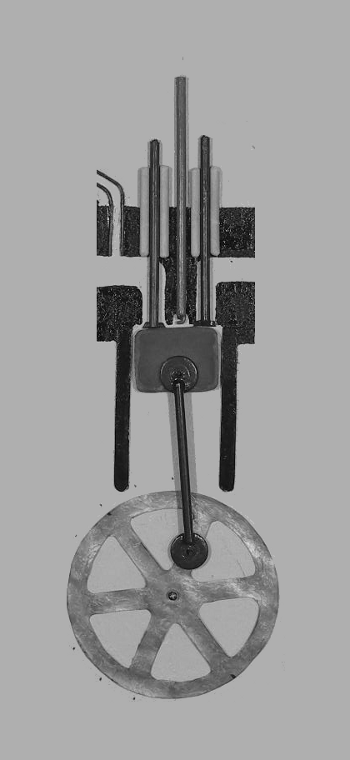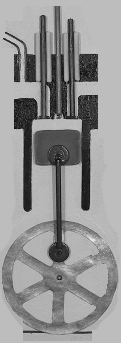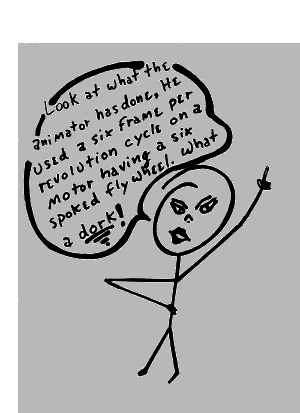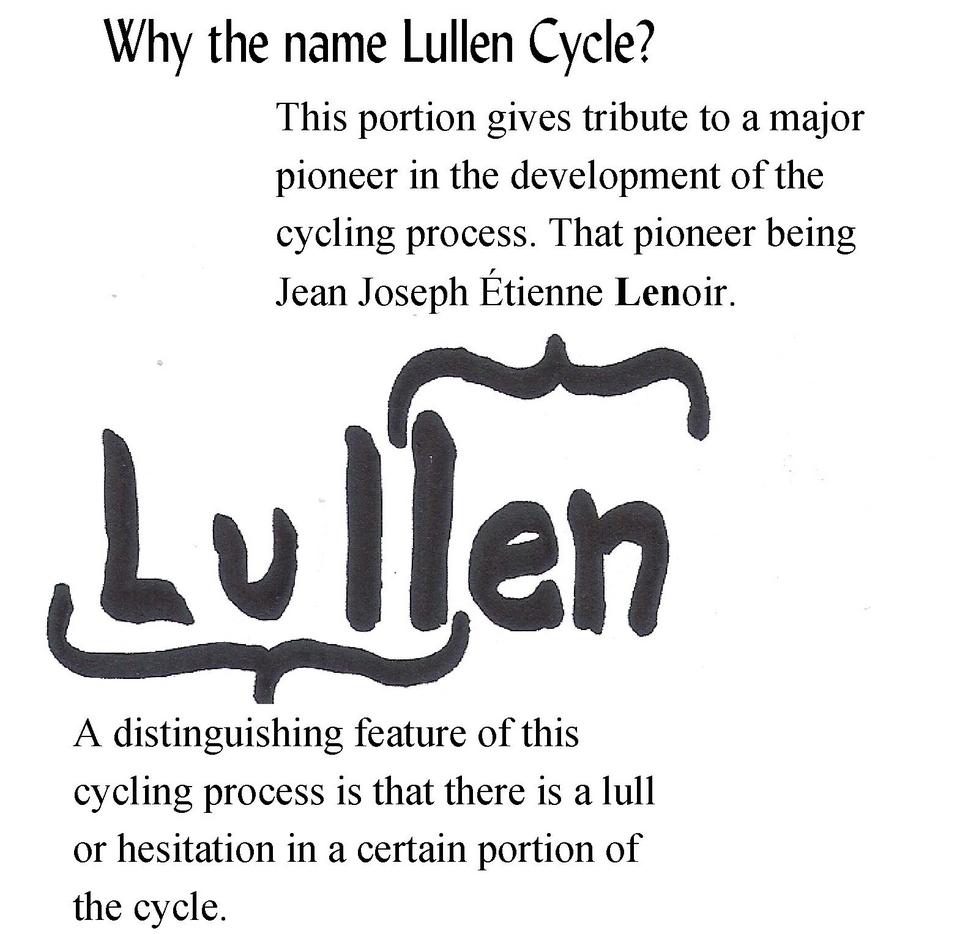
intake
fuel supply
exhaust

Soooo, What is a Lenoir-cycle motor anyway?
For the purposes of this site I will describe what I will call a “pre-Lullen-cycle " instead of a "Lenoir-cycle" in my descriptions. In principle they are one and the same but referring to a "Pre-Lullen-cycle" will be a way of paying homage to the inspiration of where I will be going with all of this without the constraint of having to be accurate in regards to the original Lenoir-cycle motors in every detail. In describing a "pre-Lullen-cycle" I will be describing the process in such a way that might be considered oversimplified. There are sites that are found in the links page that get into more detail and naturally they do not all entirely agree with each other but the differences are mostly about minor details. As I have looked into this topic I have found that there are often different takes about the history of the man (Jean Joseph Étienne Lenoir), how he was led to bring about Lenoir cycle process and some other aspects. My focus is less about past achievements and more about future ones and to present some ideas of how a process of this nature can possibly be built upon to bring about a design that I believe is a natural outgrowth of the original concept bought about by Jean Joseph Étienne Lenoir.
A "Pre-Lullen-cycle" and it's phases.
1. On the outward stroke the piston draws in a fuel/air mix until it reaches about half of the stroke.
2. The fuel/air mix gets ignited and the resulting expansion of gases pushes the piston outward and provides power.
3. The piston is forced up expelling the burned gases and then the cycle repeats.
- Note that the fuel/air mix does not get compressed in this type of motor.
1. On the outward stroke the piston draws in a fuel/air mix until it reaches about half of the stroke.
2. The fuel/air mix gets ignited and the resulting expansion of gases pushes the piston outward and provides power.
3. The piston is forced up expelling the burned gases and then the cycle repeats.
- Note that the fuel/air mix does not get compressed in this type of motor.
This somewhat depicts the process that goes on in your vehicle. "The Otto-Cycle" or "four-stroke cycle". Although there are some some other processes used, this is the most common for ground transportation and several other applications. Even most Diesel and Wankel engines use the same basic process.
1.Draw in a fuel/air mix
2. Compress the mix
3.ignite the mix. The expansion of gases provides the power.
4. Expel the burned gases.
1.Draw in a fuel/air mix
2. Compress the mix
3.ignite the mix. The expansion of gases provides the power.
4. Expel the burned gases.




© 2010 - 2011 by Walter E. Parrish. All Rights Reserved
